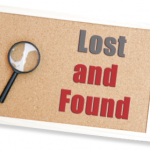be heard as being laughable, as being
not believable.
Kerby’s recounted incidents of providers laughing at his troubles—waiting overly long in an uncomfortable situation for a procedure and voicing a worry about a sensation while on a new medication—were instances of asymmetrical provider laughter at another’s troubles. For Kerby, such laughter brings to mind his earliest experiences of being laughed at and not believed. Perhaps particularly patients with rheumatic disease, many of whom have endured months or years of diagnostic delay, may be likely to interpret asymmetrical laughter as another sign of disbelief.
The cultural myth of medical miracles suggests that medications and technology are the core of medical practice. But rheumatologists and their patients know the core of medical practice is trust.
Rheumatologists need their patients to trust them to provide the best currently available care so that patients remain adherent to prescriptions that can prevent further damage.
Patients need their physicians to believe them when they describe even preposterous-
sounding sensations. They need their providers to not leave them in uncomfortable or laughable situations. Patients need their providers to strive not to unwittingly laugh at their troubles.
Laughter has the power to break hard-won trust in an instant. Kerby has not gone to see a rheumatologist in four years now.
M. Cameron Hay, PhD, is a medical anthropologist who has been conducting research with rheumatology patients and rheumatologists for more than 15 years. She is a professor in and chair of the Department of Anthropology at Miami University, Oxford, Ohio.
Kerby Hyland is a citizen scientist who possesses a lifetime of experience with autoimmune disease. He has spent more than 20 years working with physicians and researchers in their efforts to find answers to the complex issues of autoimmune arthritis.
References
- Jefferson G, Sacks H, Schegloff EA. Notes on laughter in the pursuit of intimacy. In Button G, Lee JRE (eds.), Talk and social organization. Multilingual Matters. 1987:152–205.
- Matsuzaki T, Nakajima A, Ishigami S, et al. Mirthful laughter differentially affects serum pro- and anti-inflammatory cytokine levels depending on the level of disease activity in patients with rheumatoid arthritis. Rheumatology (Oxford). 2006 Feb;45(2):182–186.
- Bennett PN, Parsons T, Ben-Moshe R, et al. Laughter and humor therapy in dialysis. Semin Dial. Sep-Oct 2014;27(5):488–493.
- Moura CS, Li R, Lawrie S, et al. Humor in systemic lupus erythematosus. Eur J Rheumatol. 2015 Mar;25(1):5–9.
- West C. Reconceptualizing gender in physician-patient relationships. Soc Sci Med. 1993 Jan;36(1):57–66.
- Haakana M. Laughter as a patient’s resource: Dealing with delicate aspects of medical interaction. Interdiscip J Study Discourse. 2001;21:187–219.
- Heritage J, Robinson JD. Accounting for the visit: Giving reasons for seeking medical care. In: Heritage J, Maynard DW, eds. Communication in Medical Care. New York: Cambridge University Press; 2006:48–85.
- Jefferson G. A note on laughter in ‘male–female’ interaction. Discourse Stud. 2004 Feb;6(1):117–133.
- Haakana M. Laughter in medical interaction: From quantification to analysis and back. J Socioling. 2002;6(2):207–35.
- Mazzocconi C, Tian Y, Ginzburg J. What’s your laughter doing there? A taxonomy of the pragmatic functions of laughter. IEEE Trans Affect Comput. 2020;3045(c):1-19.
- West C. Routine complications: Troubles with talk between doctors and patients. Bloomington: Indiana University Press. 1984.
- West C. Medical misfires: Mishearings, misgivings, and misunderstandings in physician‐patient dialogues. Discourse Process. 1984;7(2):107–134.
- Klages SV, Wirth JH. Excluded by laughter: Laughing until it hurts someone else. J Soc Psychol. Jan-Feb 2014;154(1):8–13.
- Ethofer T, Stegmaier S, Koch K, et al. Are you laughing at me? Neural correlates of social intent attribution to auditory and visual laughter. Hum Brain Mapp. 2020 Feb;41(2):353–361.
- Moll JM, Wright V. Psoriatic arthritis. Semin Arthritis Rheum. 1973;3(1):55–78.
- Shore A, Ansell BM Juvenile psoriatic arthritis—an analysis of 60 cases. J Pediatr. 1982 Apr;100(4):529–535.
- Helliwell PS, Taylor WJ. Classification and diagnostic criteria for psoriatic arthritis. Ann Rheum Dis. 2005 Mar;64 Suppl 2(Suppl 2):ii3–ii8.
- Haroon M, Gallagher P, FitzGerald O. Diagnostic delay of more than 6 months contributes to poor radiographic and functional outcome in psoriatic arthritis. Ann Rheum Dis. 2015 Jun;74(6):1045–1050.
- Dumit J. Drugs for Life: How Pharmaceutical Companies Define Our Health. Durham, NC: Duke University Press; 2012.



